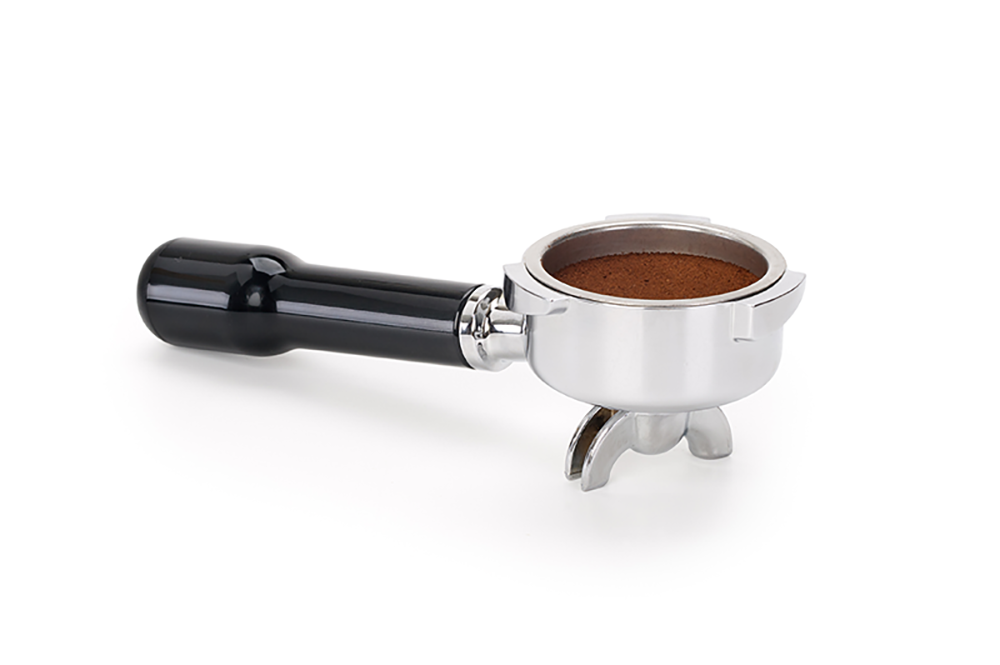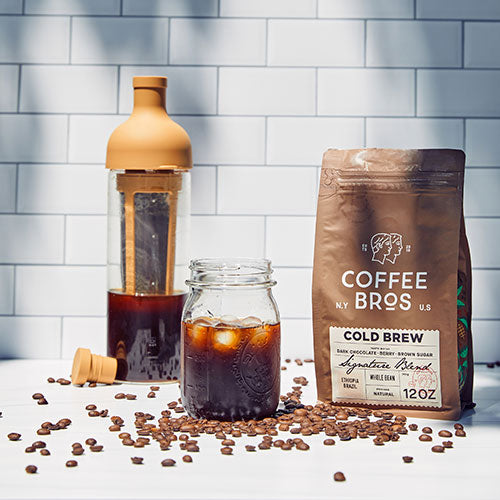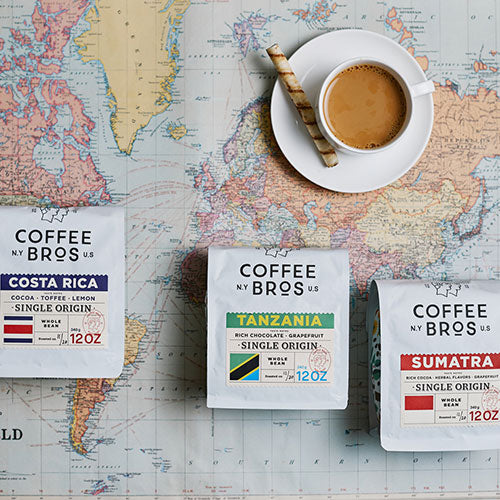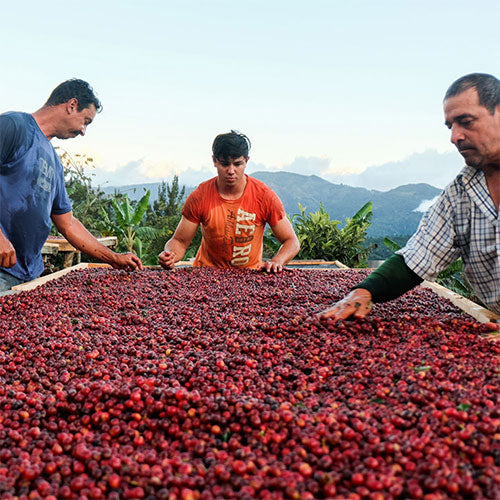Cappuccino vs. Latte
Introduction
Are you confused about the differences between a cappuccino and a latte? You're not alone! Some popular coffee chains have altered the traditional definitions of these classic Italian espresso drinks, making it difficult to understand what's on the menu at a traditional cafe. In this guide, we'll explain the variations of these popular espresso-based beverages, the components used, and how to make the perfect cup each time. Get ready to finally understand the differences between a cappuccino and a latte!
Table of Contents
- History of the Cappuccino and Latte
- Traditional coffee-to-milk ratios for Cappuccino and Latte
- Why coffee-to-milk ratios have changes in some shops
- What cups are used for a cappuccino and latte
- How much caffeine is in a cappunccino and latte
- What type of milk is used for a cappuccino and latte
- What type of coffee is best for a cappuccino and latte
- What is the best machine to make a cappuccino or latte
The History of the Cappuccino and Latte
The history of the cappuccino:
The origins of the cappuccino are somewhat uncertain, with two possible explanations for its name. The first is that Italians named their coffee with cream and sugar after the light-brown color of the robes worn by local Capuchin monks. The second is that it was simply the Italian version of the kapuziner drink, made of coffee, cream, and sugar, which originated in Vienna, Austria. The true origin is not known with certainty.
However, the story about the monks is a popular one.
As for what a cappuccino is, it has evolved since the creation of espresso machines. Today, a cappuccino typically consists of espresso, whipped cream, and either cinnamon or chocolate. This modern interpretation of the cappuccino emerged in the mid-20th century.
The history of the latte:
The latte, also known as caffe latte, cafe au lait, or cafe con leche, is a popular coffee drink that has been around for centuries. The modern latte is made of a double shot of espresso mixed with steamed milk and can come in different flavors and be served hot or cold. The history of the latte dates back to the 17th century when Europeans started mixing coffee and milk, and the term "caffe e latte" was first used in the 19th century. The espresso machine was first patented in 1884 but didn't reach its true potential until the 1940s with the invention of a spring-piston lever by Milanese cafe owner Achille Gaggia. This led to the discovery of crema and eventually, the reinvention of the latte in the 1980s when baristas in Seattle began adding designs to the milk. The latte has continued to evolve and change over time, with social media playing a significant role in shaping current trends.
What are the traditional coffee-to-milk ratios for Cappuccinos and Lattes?
We are traditionalists and biased towards espresso-based milk drinks like lattes and cappuccinos, and believe that the traditional recipes for these drinks (outlined below) produce the best-tasting ratios.
While ratios have changed over time, the most traditional ratios for each drink are as follows:
| Drink | Drink Size | Espresso Amount | Milk Amount | Froth |
|
Cappuccino |
5 ounces |
1.4 ounces (double shot) |
3.5 ounces |
1.5cm of thick foam |
|
Latte |
9.5 - 10 ounces |
1.4 ounces (double shot) |
8.1 ounces |
1.0cm of foam (not as thick) |
Cappuccino
The cappuccino ratio balances espresso and milk perfectly, similar to the flat white. The only difference is the amount of froth at the top of the drink. Some people prefer a single shot of espresso in their cappuccinos, but we still recommend a double shot.
Cappuccino Recipe:
Our recipe uses a 20g double shot of espresso (some traditional recipes call for a single shot) with a 1:2 ratio, resulting in 40g (1.4 ounces) of espresso extraction. We then add 100g (3.5 ounces) of milk, creating a perfect 5-ounce cappuccino with 1.5cm of thick milk foam.
Latte
A latte is the milkiest drink among the classics, and the proportions of milk to espresso should be tightly controlled.
Latte Recipe:
Our recipe uses a 20g double shot of espresso with a 1:2 ratio, resulting in 40g (1.4 ounces) of espresso extraction. We then add 230-240g (8.1 ounces) of milk, resulting in a 9.5-9.9 ounce latte with 1cm of thick milk foam at the top of the drink.
We have also created a simple 8-step tool to calculate the milk-to-espresso ratio for five popular drinks - latte, cappuccino, flat white, cortado, and macchiato - at varying strength levels and using either single-shot or double-shot espresso, while still maintaining the traditional milk-to-espresso ratio.
Why traditional recipes have changed
The growth of coffee shops like Starbucks has led to a significant increase in the size of drinks, with cup sizes ranging from 8 oz (short), 12 oz (tall), 16 oz (grande), to 20 oz (venti). Starbucks serves its standard cappuccinos in 8 oz cups, while lattes are a whopping 12 oz. This is 2-3 oz larger than the traditional recipe, causing a discrepancy in the espresso-to-milk ratio. The trend of larger drinks also leads to higher prices and increased demand, as consumers want larger drinks they can take with them on the go.
However, larger drinks also pose a problem. As the sizes increase, the ratios become skewed, leading to more milk and less espresso in the drink. Starbucks counteracts this issue by roasting its coffee extremely dark, which helps cut through the milk, but this strays from traditional brewing methods.
Here's where the ratios go awry:
| Starbucks vs. Traditional | Starbucks (Grande size) | Traditional Recipe |
|
Cappuccino |
320% more milk than traditional ratio |
|
|
Drink Size |
16 ounces |
5 ounces |
|
Espresso Amount |
1.4 ounces (double shot) |
1.4 ounces (double shot) |
|
Milk Amount |
14.6 ounces |
3.6 ounces |
|
Espresso to Milk Ratio |
1:11.4 (1 ounce of espresso to every 11.4 ounces of milk) |
1:3.56 (1 ounce of espresso to every 3.56 ounces of milk) |
|
Latte |
167% more milk than traditional ratio |
|
|
Drink Size |
16 ounces |
9.5 ounces |
|
Espresso Amount |
1.4 ounces (double shot) |
1.4 ounces |
|
Milk Amount |
14.6 ounces |
7.6 ounces |
|
Espresso to Milk Ratio |
1.11.4 (1 ounce of espresso to every 11.4 ounces of milk) |
1.6.8 (1 ounce of espresso to every 6.8 ounces of milk) |
What types of cups do you use for a cappuccino and latte
For those who prefer to stick to tradition, a ceramic latte or cappuccino bowl is a recommended choice. The shape of the cup plays a significant role in the overall experience of drinking a latte or cappuccino. While lattes and cappuccinos can be served in various vessels, from mugs to glasses, the most traditional way is in a wide bowl-shaped mug.
Why the Shape of the Mug Matters
The shape of the mug is crucial for creating latte art, ranging from simple hearts to more intricate designs like the rosetta or swan. An ideal mug should have an elliptical bottom that is thicker compared to the top, which is wider and thinner in its walls. The thick bottom allows for the proper blending of milk and espresso, while the wide and thin top showcases the crema. This shape differs from a classic teacup, which has uniform wall thickness from its base to rim.
Choosing a Material for Cappuccino or Latte Mugs
The temperature of the drink is another important consideration when selecting a mug material. A standard glass cup may look appealing, but it will not retain heat well, unless it is double-walled.
Among the commonly used materials for coffee cups, white ceramic is considered the most classic choice.
How much caffeine is in a cappuccino vs. a latte
Regarding caffeine content in your cappuccino or latte, espresso is the main focus. Our cappuccino and latte recipes both require a double shot of espresso, made with 20 grams of ground coffee brewed at a 1:2 ratio, yielding 40 grams or approximately 1.4 ounces of espresso liquid.
On average, a double shot of espresso contains approximately 85 milligrams of caffeine, which means that traditionally made cappuccinos and lattes have a similar amount of caffeine.
Compared to the average 12-ounce cup of coffee which has 135 milligrams of caffeine, cappuccinos and lattes have a significantly lower amount of caffeine.
| Drink Type | Caffeine Content |
|
Cappuccino (double shot of espresso) |
60 - 100mg |
|
Latte (double shot of espresso) |
60 - 100mg |
|
Cup of coffee (12 ounces) |
100 - 135mg |
|
Pepsi Soda (12 ounces) |
38mg |
|
Green Tea (12 ounces) |
42 - 50mg |
What type of milk to use for a cappuccino or latte
When it comes to making cappuccinos and lattes, using full-fat milk is recommended for best results. Full-fat milk froths well, is ideal for creating latte art, and provides the creamy texture that is typically associated with cappuccinos and lattes. Although there are many alternative milk options available that are designed for use in milk-based espresso drinks, they may not provide the same creamy foam texture as full-fat milk.
However, if you have dietary restrictions and need to avoid full-fat milk, it's perfectly fine to use a plant-based alternative. Just ask your favorite barista which alternative milk they prefer that can best replicate the traditional taste and texture of a cappuccino.
The consistency of the foam is dependent on the fat content of the milk. For a velvety and rich cappuccino, use whole milk. You can use low-fat milk as a substitute, but it may not be as smooth. Foam produced from skim milk is light and meringue-like, and dissolves quickly.
What type of coffee is the best for a cappuccino or latte?
All coffee is based on a preference from taste to what color you deem light, medium, or dark roasted coffee. We define espresso-roasted coffee not only by the color but how well that coffee pairs with the espresso brewing method and in drinks like cappuccinos and lattes. As mentioned earlier, espresso does not differ from coffee though consumers sometimes perceive it as different. The only difference between espresso and coffee is that specialty coffee roasters will go out of their way to source and roast coffee to pair well with espresso-based drinks. If you read about our favorite Light Roasted Coffees, you will find that most of these coffees flavor gets lost within milk-based espresso drinks. Most roasters crafting coffee for espresso will push the “development” of that coffee to bring out more of its sugars to help it shine through any addition of milk.
Read: The Best Coffee Beans for Espresso by Coffee Chronicler
What type of machine is best to make a cappuccino or latte?
The secret behind your cafe's delicious lattes is not just the coffee beans and brewing method, but also the espresso machine they use. Reputable cafes don't use cheaply made machines because the quality and functionality of the machine play a crucial role in making a perfect espresso.
For a standard Italian-style espresso, the machine must consistently produce 9 bars of pressure. Some machines can "pressure profile," meaning they can adjust the water pressure for different coffee types. Pressure is one of the crucial elements for great espresso, although the science behind it is not our focus here.
Temperature stability and control is another essential factor in brewing high-quality espresso. The machine must be able to easily change its temperature based on the coffee being brewed, and maintain stability during brewing. Machines without PID/temperature control are often inconsistent and produce bitter or sour tasting espresso.
For home brewing, we recommend the Italian-made Rocket Appartamento or its upgraded version, the Rocket Giotto Type V. Both machines offer the same features as high-end espresso machines at cafes, but at a fraction of the cost. While $1,800+ is not cheap, these machines are handmade in Italy using copper and steel components, and with proper care, they will last a lifetime.
Try our Espresso Roast for 20% Off
Use code: "ESPBLOG"




